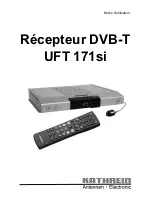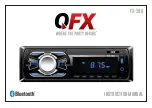
Manual overview
Before using this product, be sure to read
Im-
portant Information for the User
(a separate
manual) which contains warnings, cautions,
and other important information that you
should note.
How to use this manual
Finding the operation procedure for
what you want to do
When you have decided what you want to do,
you can find the page you need from the
Con-
tents
.
Finding the operation procedure from
a menu name
If you want to check the meaning of an item
displayed on the screen, you will find the ne-
cessary page from the
at
the end of the manual.
Glossary
Use the glossary to find the meanings of
terms.
Conventions used in this manual
Before moving on, take a few minutes to read
the following information about the conven-
tions used in this manual. Familiarity with
these conventions will help you greatly as you
learn how to use your new equipment.
!
Buttons on your navigation system are de-
scribed in
ALL CAPITAL
,
BOLD
lettering:
e.g.)
MENU
button,
MAP
button.
!
Items in different menus, screen titles, and
functional components are described in
bold
with double quotation marks
“ ”
:
e.g.)
“
Navigation Menu
”
screen or
“
Audio
Source
”
screen
!
Touch panel keys that are available on the
screen are described in
bold
in brackets [ ]:
e.g.)
[
Address
], [
Settings
].
!
Extra information, alternatives and other
notes are presented in the following for-
mat:
e.g.)
p
If the home location has not been stored
yet, set the location first.
!
Descriptions of separate operations to be
performed on the same screen are indi-
cated with
#
at the beginning of the de-
scription:
e.g.)
#
Touch [
OK
].
!
References are indicated like this:
e.g.)
=
For details, refer to
Terms used in this manual
“
USB storage device
”
The term for USB memory only is
“
USB sto-
rage device
”
.
“
SD memory card
”
The SD memory card and SDHC memory card
are collectively referred to as the
“
SD memory
card
”
.
Engb
7
Chapter
01
Intr
oduction
Introduction








































